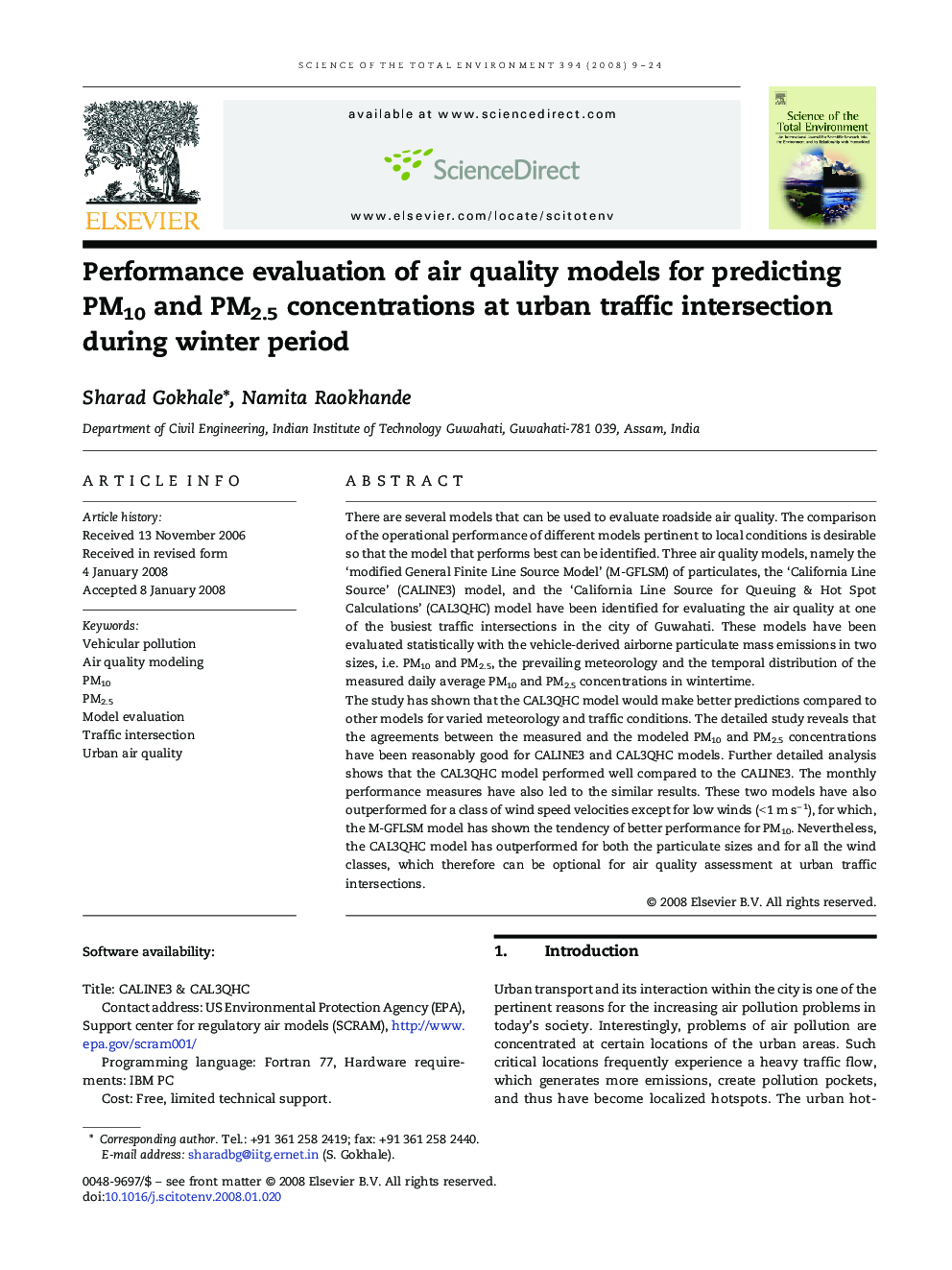| Article ID | Journal | Published Year | Pages | File Type |
|---|---|---|---|---|
| 4432916 | Science of The Total Environment | 2008 | 16 Pages |
There are several models that can be used to evaluate roadside air quality. The comparison of the operational performance of different models pertinent to local conditions is desirable so that the model that performs best can be identified. Three air quality models, namely the ‘modified General Finite Line Source Model’ (M-GFLSM) of particulates, the ‘California Line Source’ (CALINE3) model, and the ‘California Line Source for Queuing & Hot Spot Calculations’ (CAL3QHC) model have been identified for evaluating the air quality at one of the busiest traffic intersections in the city of Guwahati. These models have been evaluated statistically with the vehicle-derived airborne particulate mass emissions in two sizes, i.e. PM10 and PM2.5, the prevailing meteorology and the temporal distribution of the measured daily average PM10 and PM2.5 concentrations in wintertime.The study has shown that the CAL3QHC model would make better predictions compared to other models for varied meteorology and traffic conditions. The detailed study reveals that the agreements between the measured and the modeled PM10 and PM2.5 concentrations have been reasonably good for CALINE3 and CAL3QHC models. Further detailed analysis shows that the CAL3QHC model performed well compared to the CALINE3. The monthly performance measures have also led to the similar results. These two models have also outperformed for a class of wind speed velocities except for low winds (< 1 m s− 1), for which, the M-GFLSM model has shown the tendency of better performance for PM10. Nevertheless, the CAL3QHC model has outperformed for both the particulate sizes and for all the wind classes, which therefore can be optional for air quality assessment at urban traffic intersections.
